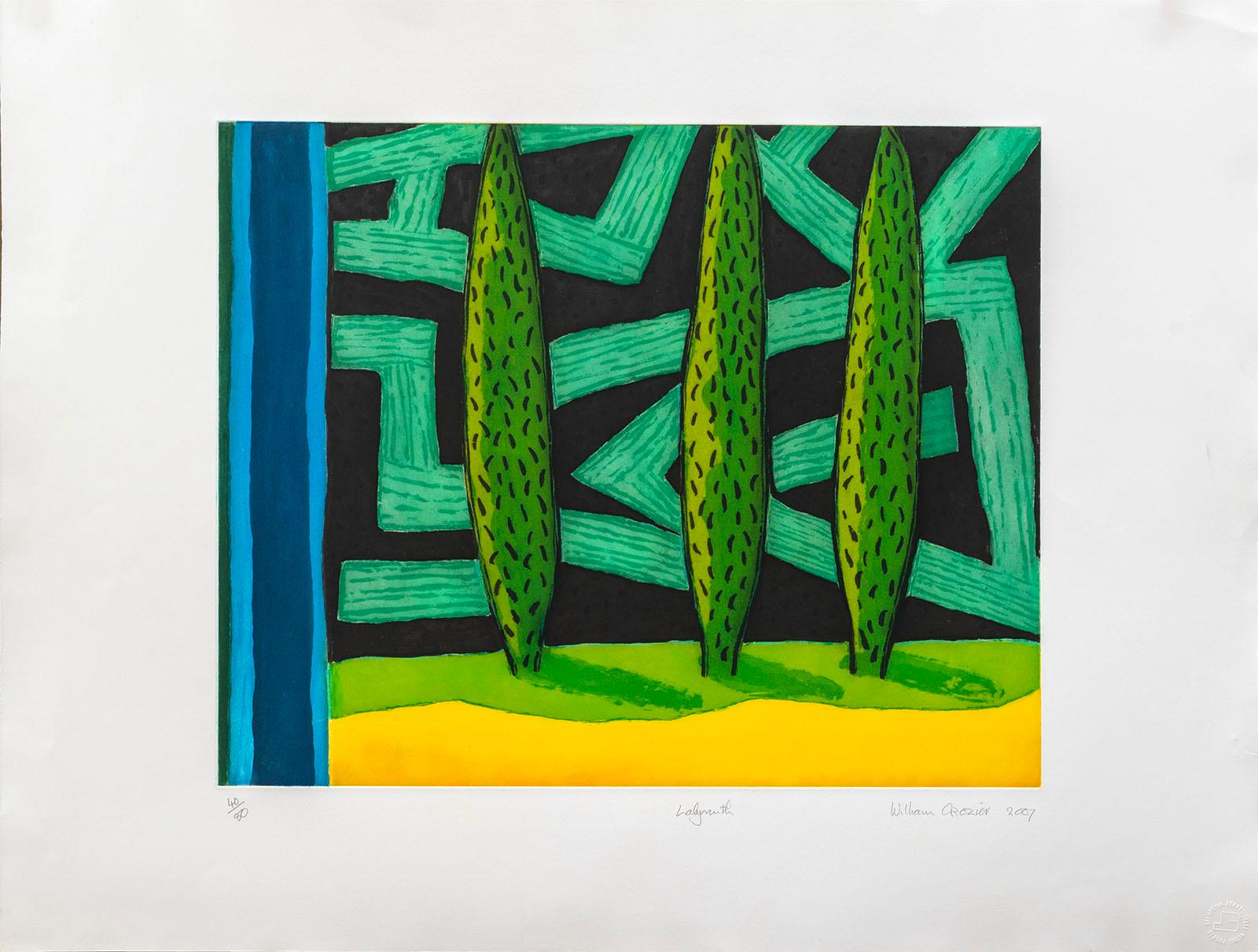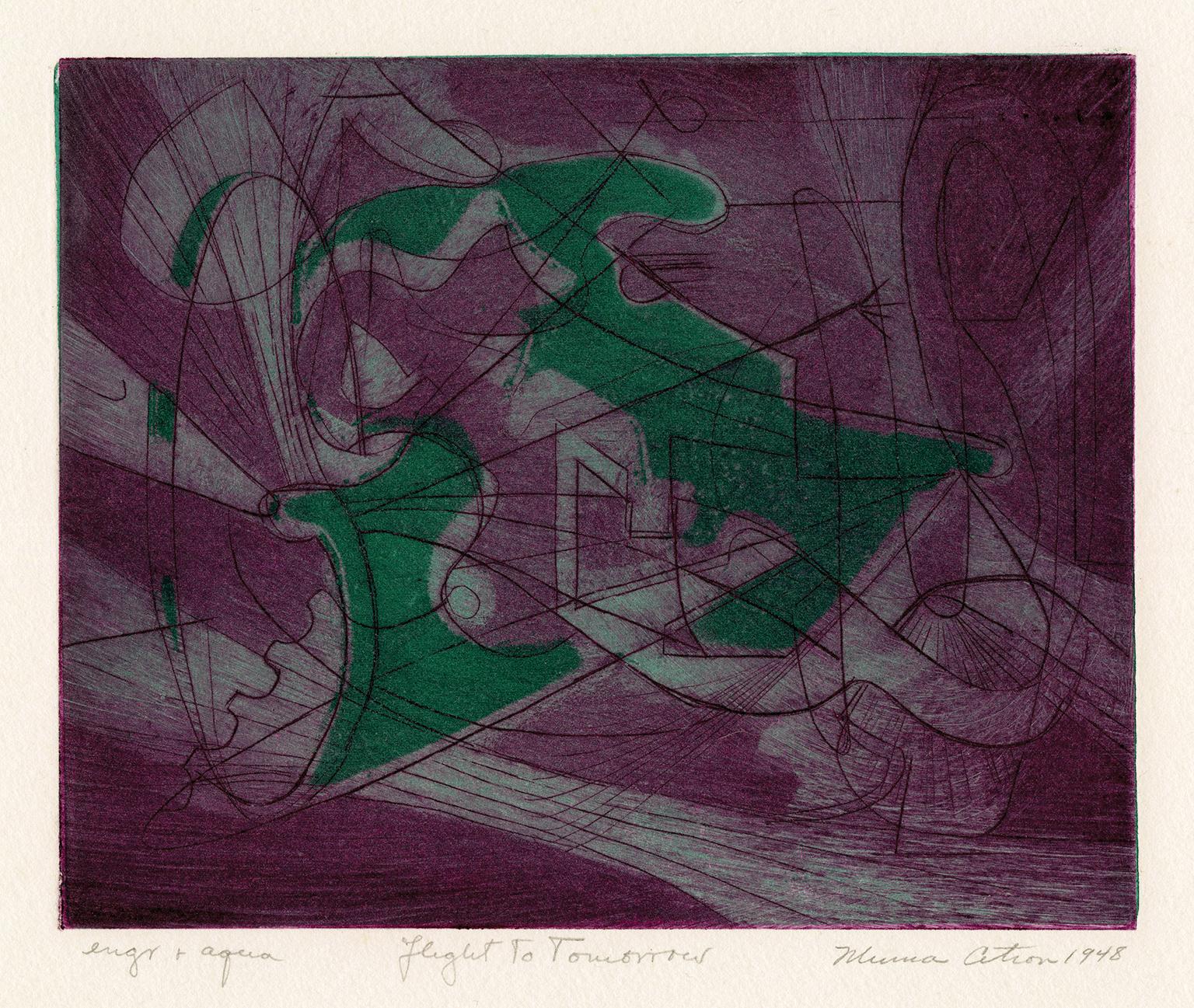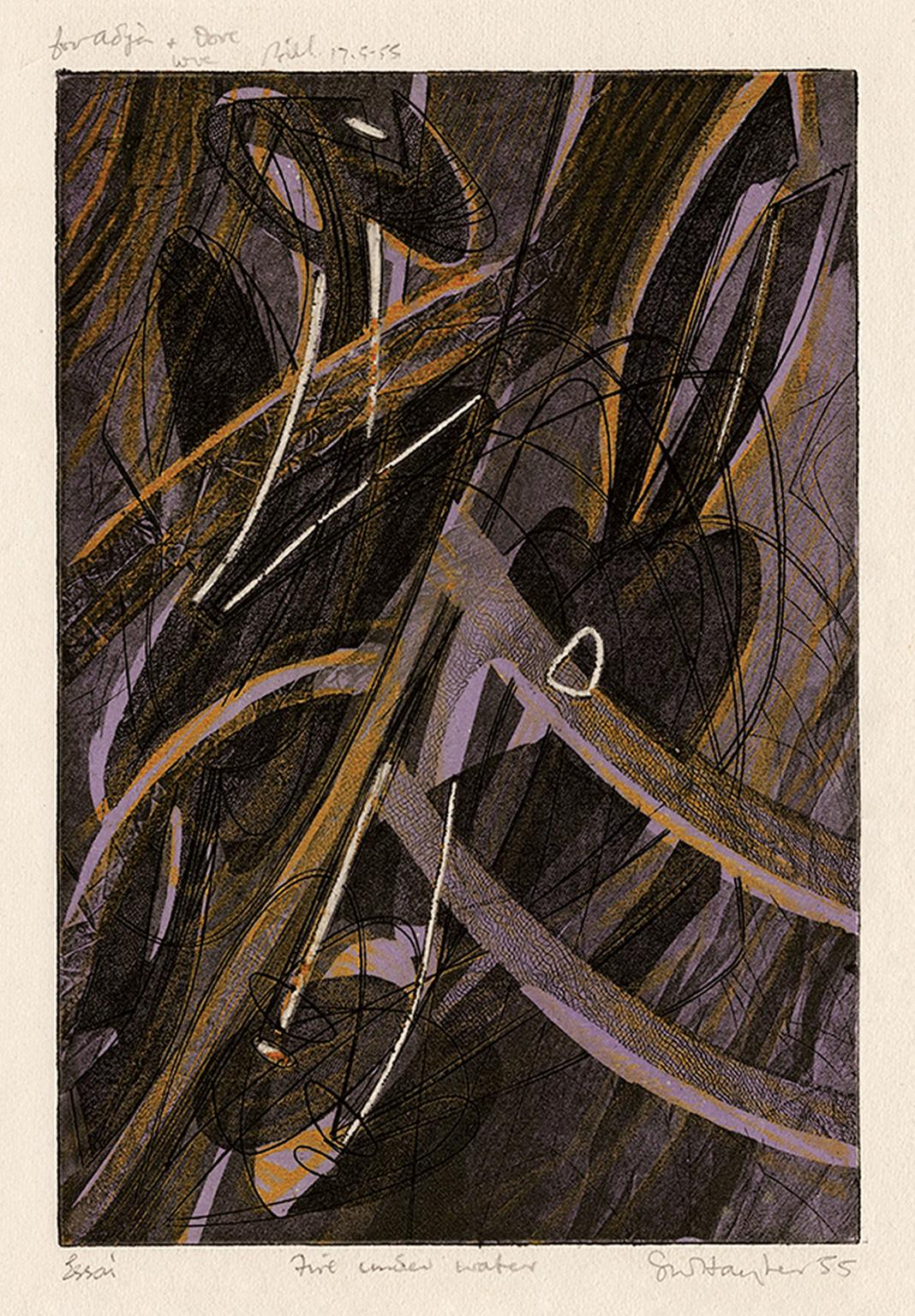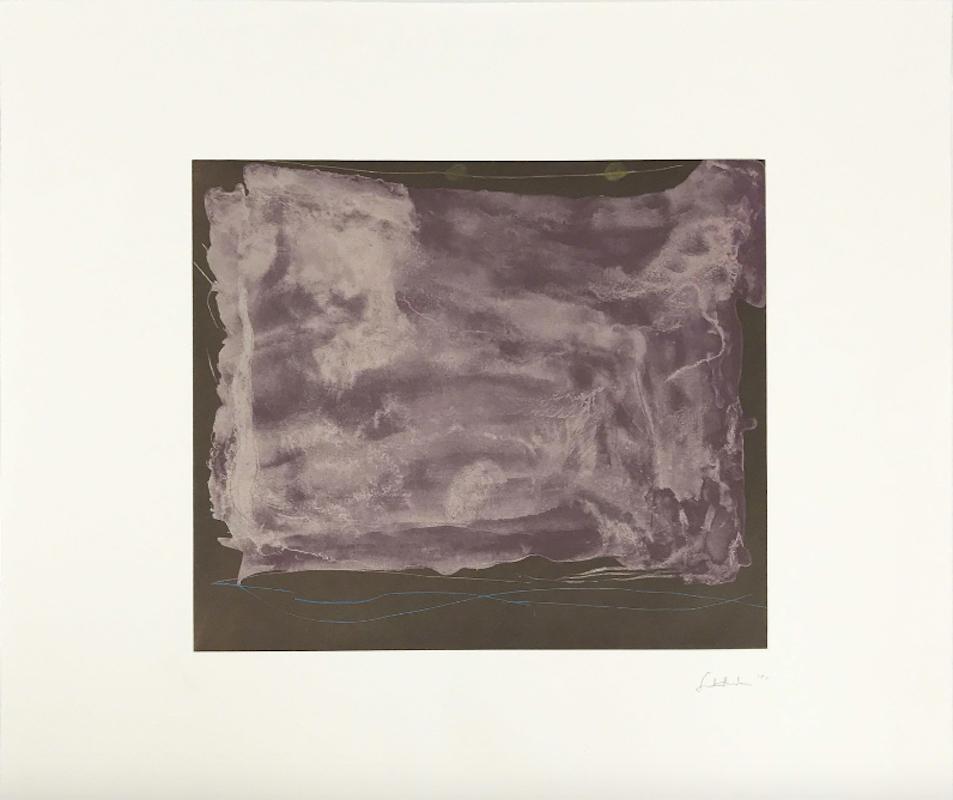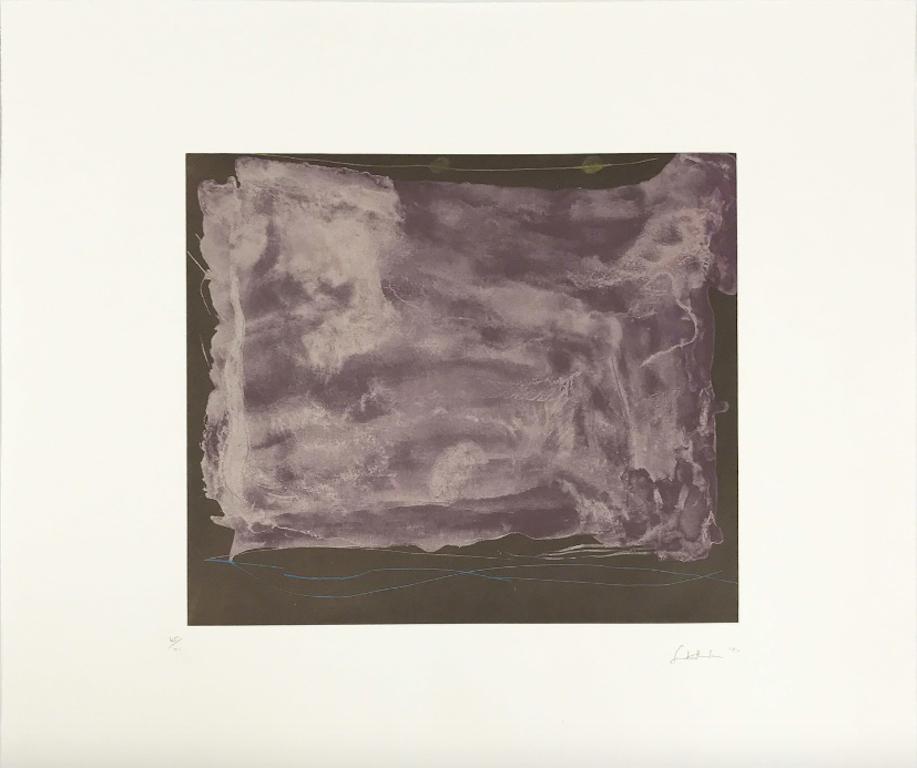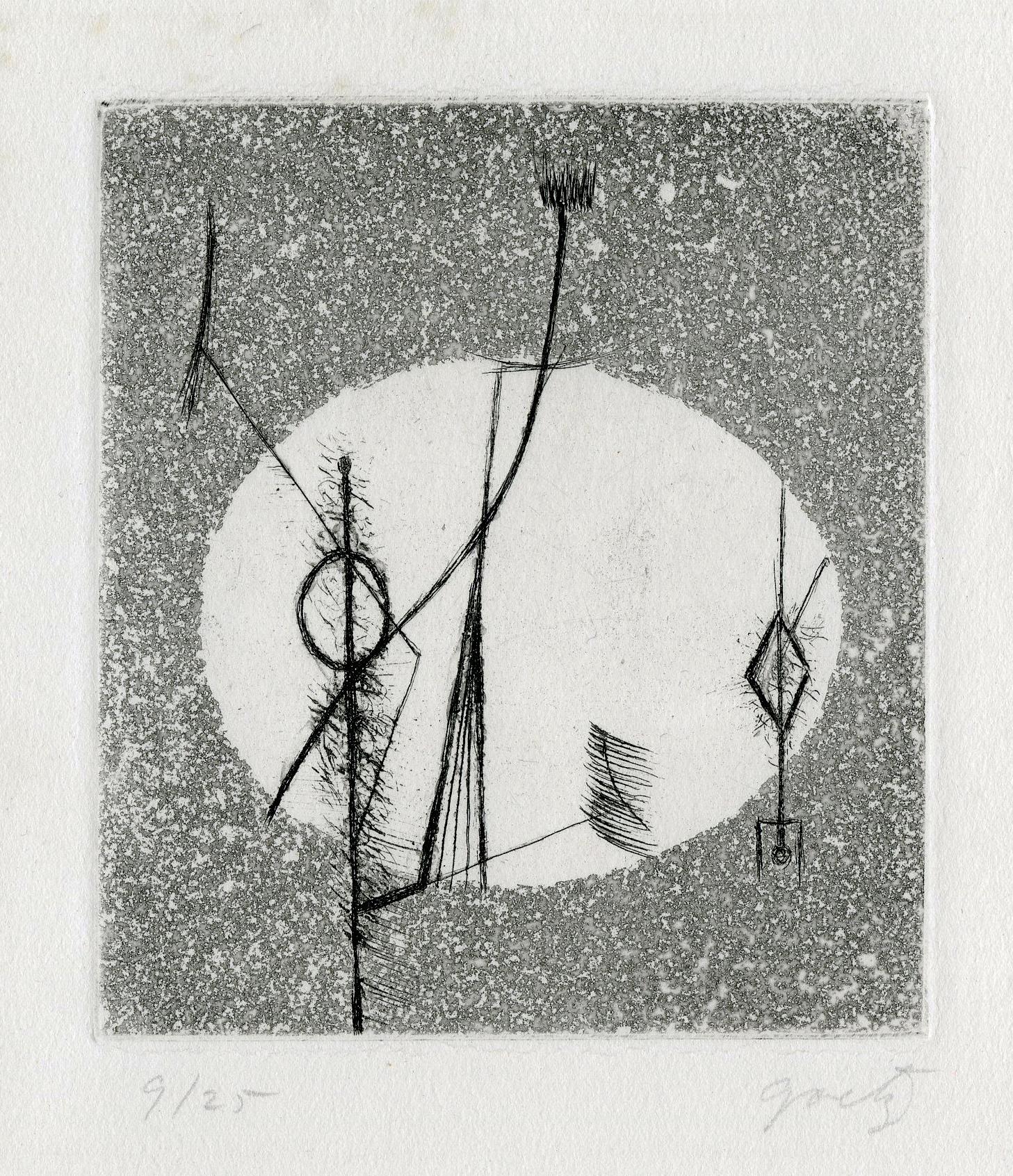Items Similar to Abstract Expressionist Engraving on Handmade Paper, 'Profile and Letters'.
Want more images or videos?
Request additional images or videos from the seller
1 of 13
James CoignardAbstract Expressionist Engraving on Handmade Paper, 'Profile and Letters'.
About the Item
Late 20th century carborundum engraving on handmade paper by French artist, James Coignard.
In the late 1960s, Coignard exploited in particular the artistic medium of etching in carborundum (first created by Henri Goetz) . It was his tireless experimentation in the search for a new artistic medium that led him to the further development of etching on carborundum, a very time-consuming process.
At the start of his career, Coignard became part of the 'realists' of the École de Paris .
Although he was always searching for a way out of the modern art genre, his work always had a modern art vibe. Marcelin Pleynet , in 'James Coignard and the memory of signs', writes: “the work of James Coignard presents all the characteristics of a work belonging to the space of modern art […] the work of James Coignard seems curiously silent as soon as we try to compare it, to think about it, to understand it according to such or such conventional data." That is its essence.
In 1948 , James Coignard discovered the Côte d'Azur and decided to take courses at the School of Decorative Arts in Nice. He then also received advice from Louis Marchand des Raux, to whom he was close. In his early days, he was a ceramicist . His meeting with Paul Hervieu, gallery owner in Nice in 1950 , was decisive for his career. Coignard exhibited for the first time in Beaulieu-sur-Mer and it was through Paul Hervieu that he met Braque, Matisse and Chagall .
In 1952, he moved to Paris and set up his ceramic workshop. He began to exhibit in Scandinavian countries. He married Mireille Poupart and eventually returned to Beaulieu-sur-mer in 1956 , where he set up his workshop. At that time other influencial artists in the region were Atlan, Christine Boumeester, Henri Goetz and Max Papart.
In 1958, Coignard stopped practicing ceramics to devote himself to painting. In the 1960s ,his career took on an international dimension, particularly in the United States and Sweden . He then travelled around the world and tried out new techniques such as tapestry and glass sculpture.
In 1968, with Henri Goetz, Coignard made his first carborundum engravings; a process, the multiple possibilities and facets of which he explored until the end of his life. From 1969 , he became interested in publishing issues and worked on his first artists' books .
In the 2000s, he strengthened his collaboration with the GKM Siwert Bergström gallery in Malmö , Sweden, with which he continued to collaborate in developing his engraved work.
- Creator:James Coignard (1925-2008, French)
- Dimensions:Height: 22.45 in (57 cm)Width: 14.97 in (38 cm)
- Medium:
- Movement & Style:
- Period:
- Condition:
- Gallery Location:Cotignac, FR
- Reference Number:
James Coignard
James Coignard, painter, ceramist, sculptor and etcher, was born in Tours in 1925. At the age of 23 and after a brief career in the French administration, he discovers the landscapes of the French Riviera and decides to study at Arts décoratifs in Nice. Four years later, he quits his job at the administration to commit himself entirely to his artistic career. The encounter with Paul Hervieu in 1950 is decisive. His collaboration with gallery Hervieu made him known in artistic circles, nationally and internationally and then particularly in Scandinavia. At the beginning of his career, art critics label James Coignard as a member of Ecole de Paris. Soon, his painting and ceramic distances themselves from those of his colleagues and he goes it alone. At the beginning of the sixties, he starts to work with glass but the technical turning point occurs in 1968 when his friend Henri Goetz discovers a new etching technique, using carborundum. Etching then becomes central in his work. At the same time, his career takes off internationally. He travels a lot, especially to Sweden and USA where he lives during a few years. 1978, James Coignard participates in the creation of the etching studio Pasnic, with which he starts a long collaboration. During the eighties, he shares his time between Paris and the French Riviera and takes an interest in artist’s books and publishing issues. He exhibits now all over the world, and is acknowledged as one of the greatest painter-etchers of his time. Until his decease in 2008, James Coignard was a prolific painter, sculptor and etcher and leaves behind an immense work.
About the Seller
5.0
Platinum Seller
These expertly vetted sellers are 1stDibs' most experienced sellers and are rated highest by our customers.
Established in 2000
1stDibs seller since 2020
165 sales on 1stDibs
Typical response time: 1 hour
- ShippingRetrieving quote...Ships From: Cotignac, France
- Return PolicyA return for this item may be initiated within 3 days of delivery.
More From This SellerView All
- Abstract Expressionist, Art Brut Lithograph, 'A Day Out'.Located in Cotignac, FRAbstract Expressionist lithograph on BFK Rives paper of a late 20th century work by French artist Eliane Larus. A lively and highly colourful lithograph...Category
Late 20th Century Abstract Expressionist Abstract Prints
MaterialsLithograph
- Double Sided Abstract Expressionist Monotypes on Handmade Paper.Located in Cotignac, FRA double sided work of two abstract expressionist monotypes on hand-made paper from an original work by Martin Engelman. The paper has one monotype to each side. See photos. The work...Category
Mid-20th Century Abstract Expressionist Abstract Prints
MaterialsMonotype
- Constructivist Abstract From Album MA 1921By Sándor BortnyikLocated in Cotignac, FRA folio sheet from the Album MA by Sándor Bortnyik. Signed in pencil by the artist bottom right, numbered in pencil bottom left, number 50 from the edition of 140. Presented in plain...Category
Late 20th Century Constructivist Abstract Prints
MaterialsPaper, Lithograph
- 'Allez!' At the Match. Toulon Rugby Club. Large Expressionist Oil on Canvas.Located in Cotignac, FRLarge abstract expressionist oil on canvas of Toulon Rugby Club supporters at a rugby match. Unsigned. Extremely vibrant and energetic depiction of Toulon ...Category
Late 20th Century Abstract Expressionist Abstract Paintings
MaterialsCanvas, Oil
- 'Danse Squelettes'. Abstract Expressionist Montage and Acrylic on Flour Sack.By Armand AvrilLocated in Cotignac, FRAbstract Expressionist mixed media montage titled 'Danse Squelettes' by French artist Armand Avril, signed and dated 2002 bottom centre and signed, dated and titled with explanation of the inspiration of this piece to the reverse. Avril's inspiration here is drawn from an exhibition in the Grand Palais de Paris called, 'la mort n'en saura rien' in 1999/2000 in which works come together from across four continents to explore man's differing perspectives on death in different cultures. As always this mixed-media is created with the humour and joy and abandon that the artist puts into all his work. A very strong sculptural image. This montage is made on a flour sack with applied cardboard and acrylic paint. The more sculpted areas of the piece stand out to around 1.5cm from the frame. The piece includes the artist's favourite motifs of cats and skulls. Avril's work will always make you smile and has great energy. Armand Avril was born in 1926 in Lyon. His father, Marcel Avril, was a painter and collector of African art. At 16 Armand became an apprentice shepherd in Provence. Avril could always be seen equipped with a sketchbook and a book on the history of art whilst tending his flock. It was not until the age of 30, in 1956, that Armand embarked on painting as an autodidact, influenced by Raoul Dufy, Pierre Bonnard, Henri Matisse and the Lyonnaise School of Painting. He exhibited for the first time in 1957. In 1960, he left for a one-year trip to Africa. There he met the painter Jean Arène who introduced him to the village of Cotignac in the Var and to Louis Pons...Category
21st Century and Contemporary Abstract Expressionist Mixed Media
MaterialsPaper, Acrylic, Cardboard
- Abstract Expressionist Gouache on Paper.Located in Cotignac, FRLyrical abstract expressionist gouache on paper by French artist Michel Loiseau. Signed bottom right. Michel Loiseau-Rizzo, born in 1937 is an illust...Category
Late 20th Century Abstract Expressionist Abstract Paintings
MaterialsPaper, Gouache
You May Also Like
- LabyrinthBy William CrozierLocated in Llanbrynmair, GB’Labyrinth’ By William Crozier Medium - Carborundum printmaking, collagraph process Edition - 47/80 Signed - Yes Size - 509mm x 407mm Date - 2007 Condition - Excellent. 10 out of 10....Category
21st Century and Contemporary Abstract Expressionist Landscape Prints
MaterialsLithograph, Mezzotint
- 'Flight to Tomorrow' — Mid-Century American Modernism — Atelier 17By Minna CitronLocated in Myrtle Beach, SCMinna Citron, 'Flight to Tomorrow', aquatint and engraving, edition unknown but small, 1948. Signed, titled, dated, and annotated 'engr & aqua' in pencil. A superb, richly-inked impression with selectively wiped plate tone, on heavy cream wove paper, the full sheet with margins (1 3/4 to 3 1/2 inches), in excellent condition. Image size 6 7/8 x 8 7/16 inches (175 x 214 mm); sheet size 11 1/8 x 14 7/8 inches (283 x 378 mm). Matted to museum standards, unframed. Literature: The Women of Atelier 17, Modernist Printmaking in MidCentury New York, Christina Weyl, Yale University Press, 2019, p. 186. Collections: Davis Museum (Wellesley), Five Colleges and Historic Deerfield Museum Consortium, Harvard Art Museums, Museum of Fine Arts, Boston, Palmer Museum of Art (Penn State...Category
1940s Abstract Expressionist Abstract Prints
MaterialsEngraving, Aquatint
- 'Feu sous L'eau' (Fire Under Water) —Mid-century Modernism, Atelier 17By Stanley William HayterLocated in Myrtle Beach, SCStanley William Hayter, 'Feu sous L'eau (Fire Under Water)', color engraving, soft-ground etching and scorper with yellow silkscreen, 1955, edition 50 plus 10 artist proofs, Black & Moorhead 221. Signed, titled 'Fire Under Water', dated and annotated 'Essai' in pencil. Dedicated in the artist’s hand 'for Adja & Dove WH Bill 17–5–55' in the top margin. A superb, richly inked impression with fresh colors, on heavy, cream wove paper; wide margins (2 1/2 to 3 7/8 inches), in excellent condition. One of 10 artist’s proofs. Image size 10 3/16 x 7 inches; sheet size 18 1/8 x 12 1/4 inches. Matted to museum standards, unframed. ABOUT THIS WORK In 1950 Hayter returned to Paris and reopened Atelier 17. Works such as 'Fire Under Water' reveal newfound influences, such as that of the Ardèche area of southern France, where he acquired a house in 1951 and frequently visited. Hayter took great interest in the flowing Escoutay River, an experience that parallels the artist and co-director of Atelier 17 Krishna Reddy’s interest in depicting water. While some forms in this print evoke the natural world, the palette of contrasting tones of purple, yellow, black, and white reflects Hayter’s belief in using color intuitively to express emotions and evoke feelings. The sharp white relief lines from the paper and the textural effects realized through soft-ground etching operate in tandem with the sweeping curves and bold colors to give the composition a sense of vitality and dynamism. —edited from the Metropolitan Museum of Art Published by 'La Jeune Gravure Contemporaine', Paris. Impressions of this work are in the following collections: British Museum, Metropolitan Museum of Art, National Gallery of Art. ABOUT THE ARTIST Stanley William Hayter (1901-1988) was a British painter and printmaker associated in the 1930s with Surrealism and from 1940 onward with Abstract Expressionism. Regarded as one of the most significant printmakers of the 20th century, Hayter founded the legendary Atelier 17 studio in Paris, now known as Atelier Contrepoint. Among the artists he is credited with influencing are Pablo Picasso, Alberto Giacometti, Joan Miró, Alexander Calder, and Marc Chagall. The hallmark of the workshop was its egalitarian structure, breaking sharply with the traditional French engraving studios by insisting on a cooperative approach to labor and technical discoveries. In 1929 Hayter was introduced to Surrealism by Yves Tanguy and André Masson, who, with other Surrealists, worked with Hayter at Atelier 17. The often violent imagery of Hayter’s Surrealist period was stimulated in part by his passionate response to the Spanish Civil War and the rise of Fascism. He organized portfolios of graphic works to raise funds for the Spanish cause, including Solidarité (Paris, 1938), a portfolio of seven prints, one of them by Picasso. Hayter frequently exhibited with the Surrealists during the 1930s but left the movement when Paul Eluard was expelled. Eluard’s poem Facile Proie (1939) was written in response to a set of Hayter’s engravings. Other writers with whom Hayter collaborated included Samuel Beckett and Georges Hugnet. Hayter joined the exile of the Parisian avant-garde in 1939, moving with his second wife, the American sculptor Helen Phillips...Category
1950s Abstract Expressionist Abstract Prints
MaterialsEngraving, Etching
- Soho DreamsBy Helen FrankenthalerLocated in New York, NY1987 Color etching, aquatint, drypoint Sheet: 15 3/4 x 18 3/4 in. Edition of 71 Signed, dated and numbered in pencil, lower marginCategory
1980s Abstract Expressionist Abstract Prints
MaterialsDrypoint, Etching, Aquatint
- Soho DreamsBy Helen FrankenthalerLocated in New York, NY1987 Etching, aquatint and drypoint in colors, on wove paper Sheet: 15 3/4 x 18 3/4 in. Edition of 71 Signed, dated and numbered in pencil, lower marginCategory
1980s Abstract Expressionist Abstract Prints
MaterialsPaper, Drypoint, Etching, Aquatint
- UntitledBy Henri GoetzLocated in Fairlawn, OHUntitled Engraving, drypoint & carborundum, c. 1960's Signed and numbered in pencil lower margin (see photos) Edition: 25 (9/25) Printed by the artist Condition: Adhesive residue on the verso top margin from previous matting. Image/Plate size: 4 1/2 x 4 inches Note: Goetz was born in the United States, moved to Paris and became a noted Surrealist artist and journalist of the surrealist movement. As a printmaker, Goetz invented carborundum printmaking in the 1960’s. In 1968, La gravure au carborundum, a treatise on carborundum printing, was published by the Maeght Gallery. It was prefaced by Joan Miró. Goetz created many abstract prints using this method. Other artists such as Antoni Clavé, Antoni Tàpies, and in particular Joan Miró, employed carborundum printing in their work. Henri Bernard Goetz (1909-1989) Henri Bernard Goetz was born 29 September 1909 in New York, in a family of French and American origin. He studied at Harvard University and the Grand Central Art School before moving to Paris in 1930 where he continued his studies at the Academies Julian and Academies Ozenfant in Montparnasse. After a brief return to the US in the early 1930’s he settled permanently in France, taking a Parisian studio next to Victor Brauner. With Brauner Goetz became involved with the Surrealist group and was soon a highly accomplished exponent. 1935 would be a year of major importance for Goetz: he exhibited for the first time at the Salon des Surindependants, he married the Dutch painter Christine Boumeester and he met Hans Hartung, who would become a close lifelong friend. In 1937 Goetz held his first solo show at Galerie Van Leer, Paris. During the war, having neglected to become naturalized French citizens, Goetz and Boumeester became illegal aliens and both worked in the resistance movement. They printed leaflets on a simple printing press and created posters to paste...Category
1960s Abstract Expressionist Abstract Prints
MaterialsEngraving
